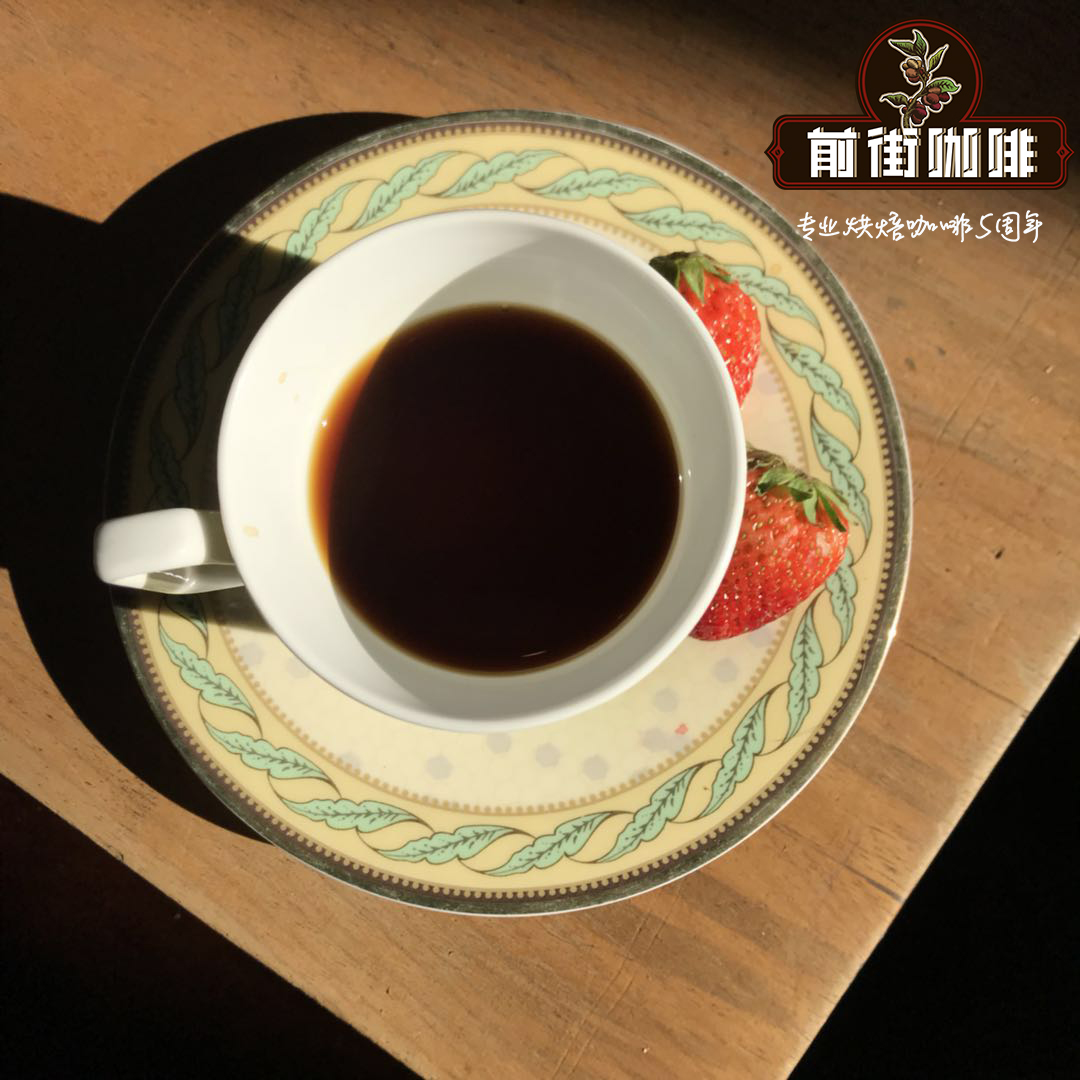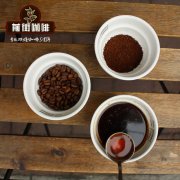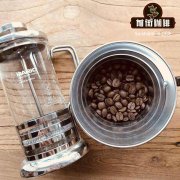[Indonesian Java variety] what is the flavor of washed coffee beans at java Frinza Manor in Java? Java coffee

Professional coffee knowledge exchange more coffee bean information please follow the coffee workshop (Wechat official account cafe_style)
[Indonesian Java variety] what is the flavor of washed coffee beans at java Frinza Manor in Java? What are the taste characteristics and hand-brewing methods of Java coffee?
Wildan Mustof is the owner of the manor. In 2010, he and his wife Atieq first started their coffee growing project in the Sindangkerta Weninggalih area. Since then, the farm at Flint Manor in Java has become their main growing area. Since the first year of production, Wildan has focused on quality and strict management and handling. While most Indonesian coffee producers are doing coffee wet planing, Wildan focuses on full-washing treatment. This coffee is a variety cultivated by Sigarar Utang, which is located at 1300m above sea level, 1400m above sea level in West Java (locally known as "Sunda"), as well as a well-ventilated storage space and drying plant, which means that they have complete control over the quality of the products from harvesting, grading, screening to shipping. Most of their coffee is washed in full water, but it is also treated with wet planing and sun treatment, mainly for the local market. They classify coffee batches according to where they are planted, the variety they plant, and the date of harvest. Through cooperation with the Coffee Research Center, they have planted a lot of unknown varieties on the farm, which are different from other species, because the coffee trees are still too small and no one knows how the taste spectrum of these coffee trees will be presented. In addition to their own coffee production, they also handle coffee for local coffee farmers.
Indonesia is made up of more than 17,000 islands scattered over the equatorial volcanic belt and has fertile soil. Famous producing areas include Sumatra in the west, Sulawesi in the middle, and Java in the south. Coffee was brought to Jakarta by the governor of the Netherlands from Malabar, India, in 1696, and local farmers were forced to grow coffee instead of white rice. Since 1850, the Dutch East India Company has expanded its planting area to other Indonesian islands. By far, Indonesia is the fourth largest coffee exporter in the world.
The rust that ravaged Indonesia in 1876 nearly wiped out Arabica coffee. Since then, farmers have begun to plant Robusta with high disease resistance in the hardest-hit areas of the East Java lowlands. After the independence of the country, local talents replanted the higher quality Arabica (Arabica). So far, 80% of Indonesia's exports are still commercial-grade Robasta. Interestingly, since the eastern islands of Timor and Flores were Portuguese dependencies at that time, the species were different from those of the Netherlands and had a lesser impact. You can still drink "ancient species" from the 16th century.
The evolution of bean species reflects the planting history of Indonesia. There are many defects in Indonesian coffee, the biggest reason is improper handling. Whether washed or insolated by farmers in Africa and Central America, beans are hidden in pods like melon seed shells and are beaten by threshing machines before they are exported. However, the popular Wet hull (Giling Basah) method in Indonesia is that after washing off the pectin layer, the coffee is quickly beaten away without being dried. The water content of wet coffee beans is as high as 50%. The middleman collects the kernels and dries them out of control: exposure to the sun loses organic acids, while drying in the mud gives beans a chance to inhale the smell and dirt. This is all due to farmers' lack of knowledge in order to earn fast money.
Product name: washed coffee beans at Frinza Manor in West Java, Indonesia
Manor: Java Frinsa Estate of Frinza Manor in West Java
Variety: Sigarar Utang
Altitude: 1400 m
Javascript:void (0)
Flavor: orange peel aroma, rich aroma, sweet plum flavor, refreshing taste, excellent cleanliness
The harvest season is from May to September, and the main harvest is from June to August. After the coffee is harvested, the coffee cherries that are not ripe and affected by diseases and insect pests are screened and removed by hand.
After peeling, the harvested berries will first undergo dry fermentation for 18 hours, then add water and continue to ferment for 10 Murray for 12 hours, and then rinse with clean water after complete fermentation.
At present, most coffees are dried on the scaffolding in the greenhouse for 2 days, and then moved to the terrace to dry. The drying time is about 14m / m2 for 20 days, depending on whether it rains during the drying period.
The evolution of bean seed reflects the history of planting.
Sumatran coffee is best known for Manning. The brand, which is neither a bean seed nor a producing area, comes from the mistranslation of the name of a Mandailing. Mantenin is also rich in Mount Jiayu in Aceh Province and in the Lindong producing area around the northern volcanic lake Doba. The names include "Green Treasure" and "Blue Eye", which are colorful. Sumatran coffee is generally supple, dense, low-acid, with earthy, cedar, cut tobacco and cocoa flavors.
Sulawesi has been around for more than 100 million years, so the soil is more mineral-rich than other Indonesian islands, and the coffee produced is brighter. Among them, the production near Tana Toraja Mountain is the most famous. It has a hint of spice, including pepper, cinnamon and nuts.
Qianjie recommended cooking:
Filter cup: Hario V60
Water temperature: 88 degrees
Degree of grinding: small Fuji degree of grinding 4
Cooking methods: the ratio of water to powder is 1:15, 15g powder, the first injection of 25g water, 25 s steaming, the second injection to 120g water cut off, waiting for the powder bed water to half and then water injection, slow water injection until 225g water, extraction time about 2:00
Analysis: using three-stage brewing to clarify the flavor of the front, middle and back of the coffee. Because the V60 has many ribs and the drainage speed is fast, it can prolong the extraction time when the water is cut off.
Important Notice :
前街咖啡 FrontStreet Coffee has moved to new addredd:
FrontStreet Coffee Address: 315,Donghua East Road,GuangZhou
Tel:020 38364473
- Prev

How many coffee producing areas are there in Java, Indonesia? How does Indonesian Java coffee taste? Java claw coffee
Professional coffee knowledge exchange more coffee bean information please follow the coffee workshop (Wechat official account cafe_style) how many coffee producing areas are there in Java, Indonesia? How does Indonesian Java coffee taste? What is the variety of Java Java coffee? 85% of Java coffee is produced in complex volcanoes near Ijen in the east of Java. The range of height suitable for coffee production is 3000 to
- Next

[washed java growing seed] what is the flavor and taste of the Java variety of the Manor San Jose in Nicaragua? Such as
For more information on coffee beans, please follow the coffee workshop (Wechat official account cafe_style) [washed Java seed] what is the flavor and taste of Java varieties in Manor San Jose, Nicaragua? How to cook Java coffee beans? San Jose Manor Java species, is a long classical strain, with floral and quite sweet fruit flavor! The batch code is 3012
Related
- Detailed explanation of Jadeite planting Land in Panamanian Jadeite Manor introduction to the grading system of Jadeite competitive bidding, Red bid, Green bid and Rose Summer
- Story of Coffee planting in Brenka region of Costa Rica Stonehenge Manor anaerobic heavy honey treatment of flavor mouth
- What's on the barrel of Blue Mountain Coffee beans?
- Can American coffee also pull flowers? How to use hot American style to pull out a good-looking pattern?
- Can you make a cold extract with coffee beans? What is the right proportion for cold-extracted coffee formula?
- Indonesian PWN Gold Mandrine Coffee Origin Features Flavor How to Chong? Mandolin coffee is American.
- A brief introduction to the flavor characteristics of Brazilian yellow bourbon coffee beans
- What is the effect of different water quality on the flavor of cold-extracted coffee? What kind of water is best for brewing coffee?
- Why do you think of Rose Summer whenever you mention Panamanian coffee?
- Introduction to the characteristics of authentic blue mountain coffee bean producing areas? What is the CIB Coffee Authority in Jamaica?

